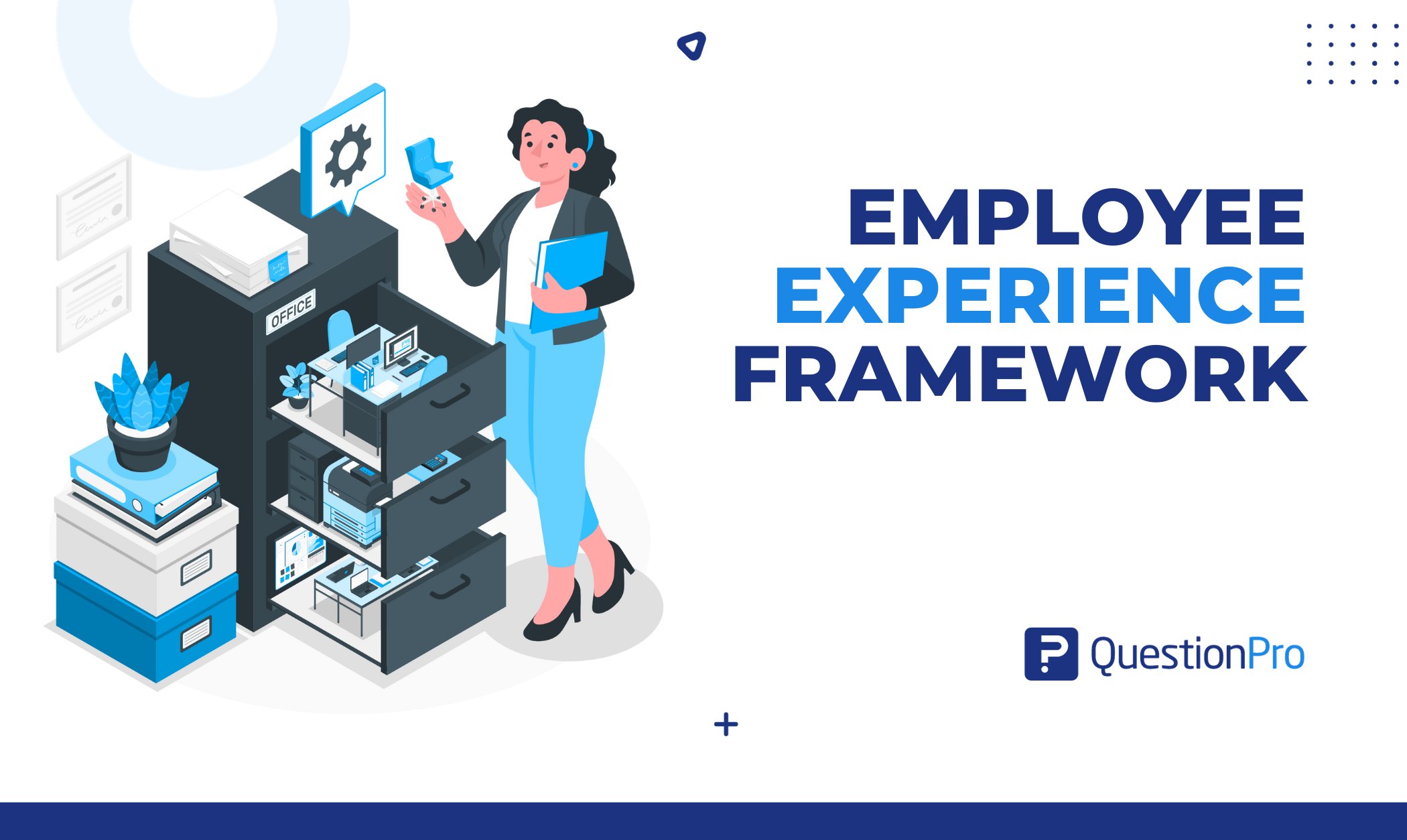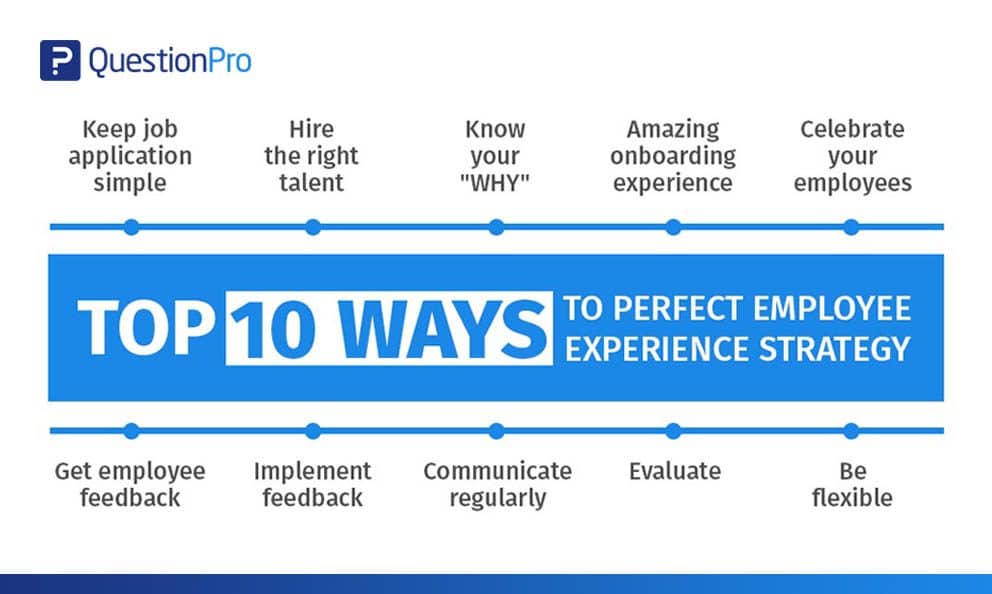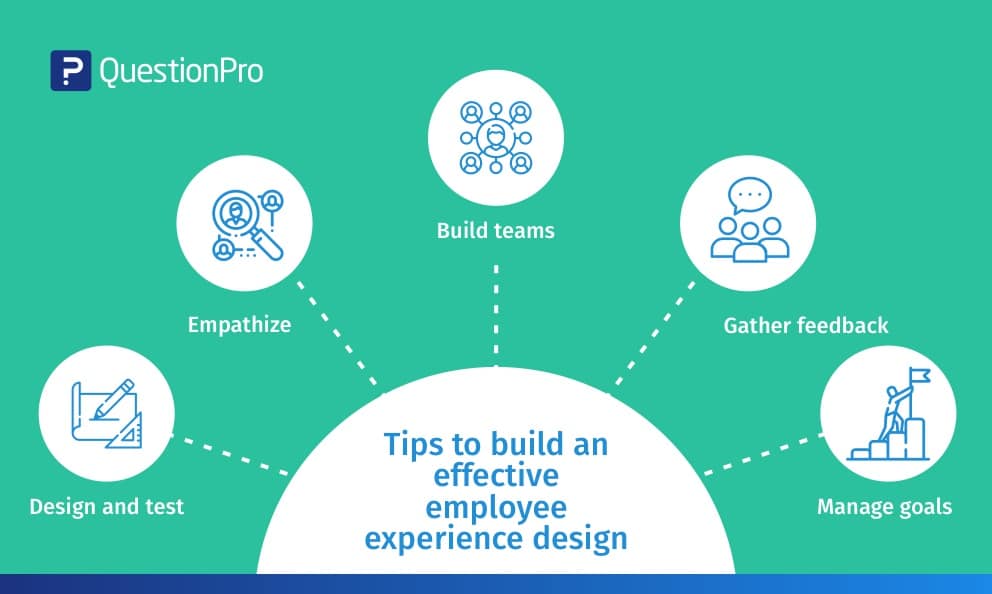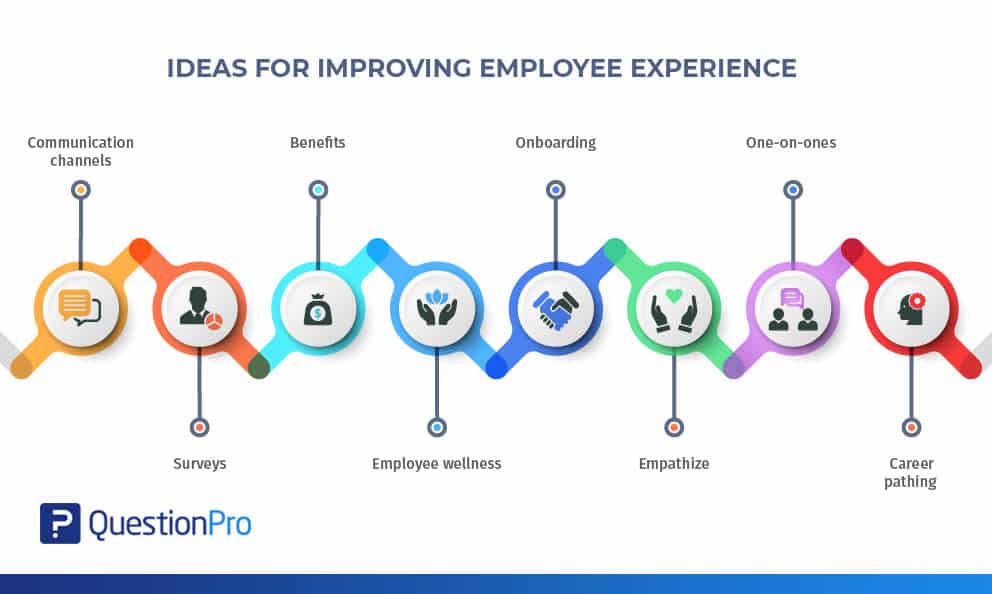
Employee experience framework is a critical factor in the success of any organization. Engaged employees are more productive, committed, and innovative, which ultimately leads to improved business outcomes.
However, achieving high levels of employee engagement requires more than just occasional perks or team-building activities. It demands a competitive advantage and a comprehensive and strategic approach to managing the entire employee experience.
Ensuring a positive and healthy employee experience is necessary for employee retention strategy, positive work culture, employee morale, work experience, etc. But it’s easier said than done. So many aspects are involved, and it’s not just one function’s responsibility.
HR teams are equally responsible for management, supervisors, and colleagues. Employees should be surveyed to know how their experiences are to improve them through various initiatives.
This blog will explore an employee experience framework designed to enhance employee engagement.
Definition of employee experience
Employee experience refers to the sum of all interactions, perceptions, and feelings that an employee has during their journey with an organization. It encompasses every touchpoint an employee lifecycle has with the company, from the initial recruitment process to their daily work tasks, interactions with colleagues and managers, and eventually, their departure or ongoing career development within the organization.
Employee experience is a holistic concept that takes into account the physical, emotional, and psychological well-being of employees, aiming to create a positive and engaging work environment that fosters productivity, customer satisfaction, and retention.
Understanding the employee experience framework
The employee experience (EX) framework is a strategic approach that organizations use to enhance and manage the holistic journey of their employees throughout their tenure with the company.
Ensuring a healthy work-life balance is a fundamental element of our exceptional employee experiences framework, as we believe it contributes to employee well-being and overall organizational success.
It encompasses various touchpoints, from the initial recruitment and onboarding process to ongoing engagement, development, and exit. Positive employee experiences are crucial for attracting and retaining top talent, fostering employee satisfaction, and achieving organizational success.
Importance of employee experience framework
An employee experience framework is a strategic approach to designing and managing the various touchpoints and interactions that employees have with their organization throughout their journey as employees. It encompasses everything from recruitment to onboarding, day-to-day work experiences, career development, and offboarding.
The importance of having a well-defined employee experience framework cannot be overstated, as it significantly impacts an organization’s performance, culture, and overall success.
Here are some key reasons why an employee experience framework is crucial:
Talent attraction and retention
A positive employee experience framework can help attract top talent to the organization. When candidates see that an organization prioritizes its employees’ well-being and development, they are likelier to choose that organization.
Moreover, a good employee experience framework also promotes employee retention, reducing turnover costs and ensuring the organization retains its most valuable employees.
Employee engagement
Engaged employees are more productive, innovative, and committed to the organization’s mission. A well-structured employee experience framework fosters engagement by providing meaningful work, opportunities for growth, and a supportive work environment.
Productivity and performance
Employees who feel valued and supported are more likely to perform at their best. They are motivated to go the extra mile and contribute to the organization’s success. A positive employee experience framework can boost overall productivity and individual performance.
Workplace culture
The employee experience framework plays a critical role in shaping the organizational culture. It sets the tone for how employees are treated and how they treat each other. A culture that prioritizes employee well-being, inclusivity, and open communication can have a positive ripple effect on the entire organization.
Innovation and creativity
Satisfied and engaged employees are more likely to generate new ideas and solutions. A well-designed framework encourages innovation by providing employees with the autonomy and resources to experiment and think creatively.
Employee development
Career growth and development opportunities are essential for retaining top talent. An employee experience framework that includes training, mentoring, and clear paths for advancement can help employees see a future within the organization and invest in their professional growth.
Feedback and continuous improvement
A structured framework allows organizations to collect feedback from employees at various touchpoints in their journey. This feedback can be used to identify areas of improvement and make necessary changes to enhance the employee experience continually.
Brand reputation
A positive employee experience benefits current employees and enhances the organization’s reputation as an employer. Happy employees are more likely to become brand advocates, helping attract more talent and customers.
Compliance and risk mitigation
A well-defined framework can help organizations ensure they comply with labor laws, regulations, and ethical standards. It can also mitigate the risk of legal issues related to employee treatment.
Bottom-line impact
A strong employee experience framework can directly impact an organization’s bottom line by reducing turnover costs, increasing revenue through employee-driven innovation, and improving overall operational efficiency.
If you want to learn about Employee Retention Software, visit: https://www.questionpro.com/blog/employee-retention-software/
Top 6 elements that make an excellent employee experience framework
Having an employee experience framework will help you track, measure, and improve your staff experience. So, what are some things that you can do to improve the employee experience? We have put together a framework for you; it is important to remember these are guidelines, and you may add, subtract, and modify them as necessary for your organization.
Let’s look at the elements that should be part of your workforce experience framework that will boost employee engagement.
1. Communication
In an organization, no matter how big or small, communication has to be two-way, fair, and transparent. The leadership team needs to inform all employees of strategic decisions, management changes, or business goals.
On the other hand, employees should be given freedom and mediums to express their ideas, concerns, or suggestions. A dialog is as crucial to smooth business operations as is office infrastructure. To ensure a smooth flow of dialog, conduct town halls, regular meetings, and interactive organization-wide events.
2. Employee experience strategy
Since there are so many aspects involved in employee experience, it is ideal to have an employee strategy in place. Without that, you may be lost and find it difficult to prioritize your actions.
Devise a strategy, stick to it, and be on the lookout to see what’s working and what’s hampering your staff experience. You can make changes accordingly. Remember, there isn’t a strategy for workforce experience that works for all. We put out a detailed article on this some time ago. Here’s how you can perfect your employee experience strategy.

3. Employee experience design
All employees pass through the employee lifecycle, going through various experiences in their employee journey. Some of these may be unique, while some may be common for most. Supervisors, senior leaders, and HR Managers can derive from these experiences and take measures to improve the experience.
Being empathetic is crucial to and instrumental in making effective changes to your people processes. A detailed blog on employee experience design was recently published on our website. Here are some tips to build an effective employee experience design from that blog.

4. Positive employee experience
Positive employee experience is imperative to ensure employee intent to stay with your organization remains high. This not only helps in arresting employee churn but also improves staff productivity, workplace culture, and staff engagement.
To ensure a great employee experience management, you can focus your efforts on employee wellness, improving communication channels, career planning, and effective onboarding. Here are some detailed tips and ideas to improve the employee experience.
LEARN ABOUT: Employee Wellness

5. Continuous staff feedback
Organizations need to gather feedback from employees on a regular basis. They can do it via meetings or online employee surveys. How well are your employee initiatives doing? Do your employees feel engaged at work?
Answers to these important questions and more can be gathered only when you solicit staff feedback. It may be hard to realize and fix gap areas without direct feedback from your staff. Make employee feedback a key piece of your employee experience framework. Organizations that focus on continuous feedback from employees have a higher rate of staff engagement and employee morale.
6. Employee feedback tool
Using online employee surveys such as engagement surveys or day-to-day work environment surveys to gather real-time information is a great way to ease your feedback efforts and manage your business performance management processes.
Online employee survey tools or platforms come with a set of readymade templates that you can use to start collecting feedback right away. These can be modified to include your questions, brand themes, logos, etc. They provide in-depth analytics that lets you bring about informed changes in your employee initiatives.
Conclusion
An effective employee experience framework is a strategic investment in your organization’s success. By focusing on company culture, recruitment, development, well-being, recognition, and feedback, you can create an environment where employees are not just engaged but deeply committed to the company’s mission and goals.
Remember that employee engagement is an ongoing employee journey that requires dedication and adaptability, but the rewards in terms of productivity and retention are well worth the effort.
Brands need to understand and remember that customer experience (CX) and employee experience (EX) are linked and should focus on the employee experience first. Good EX will translate into a better CX. Using Employee feedback tools can help in getting information and ideas for improving EX.
QuestionPro Workforce is a one-stop solution for all your employee experience and workplace culture surveys. Create an account to see for yourself.







